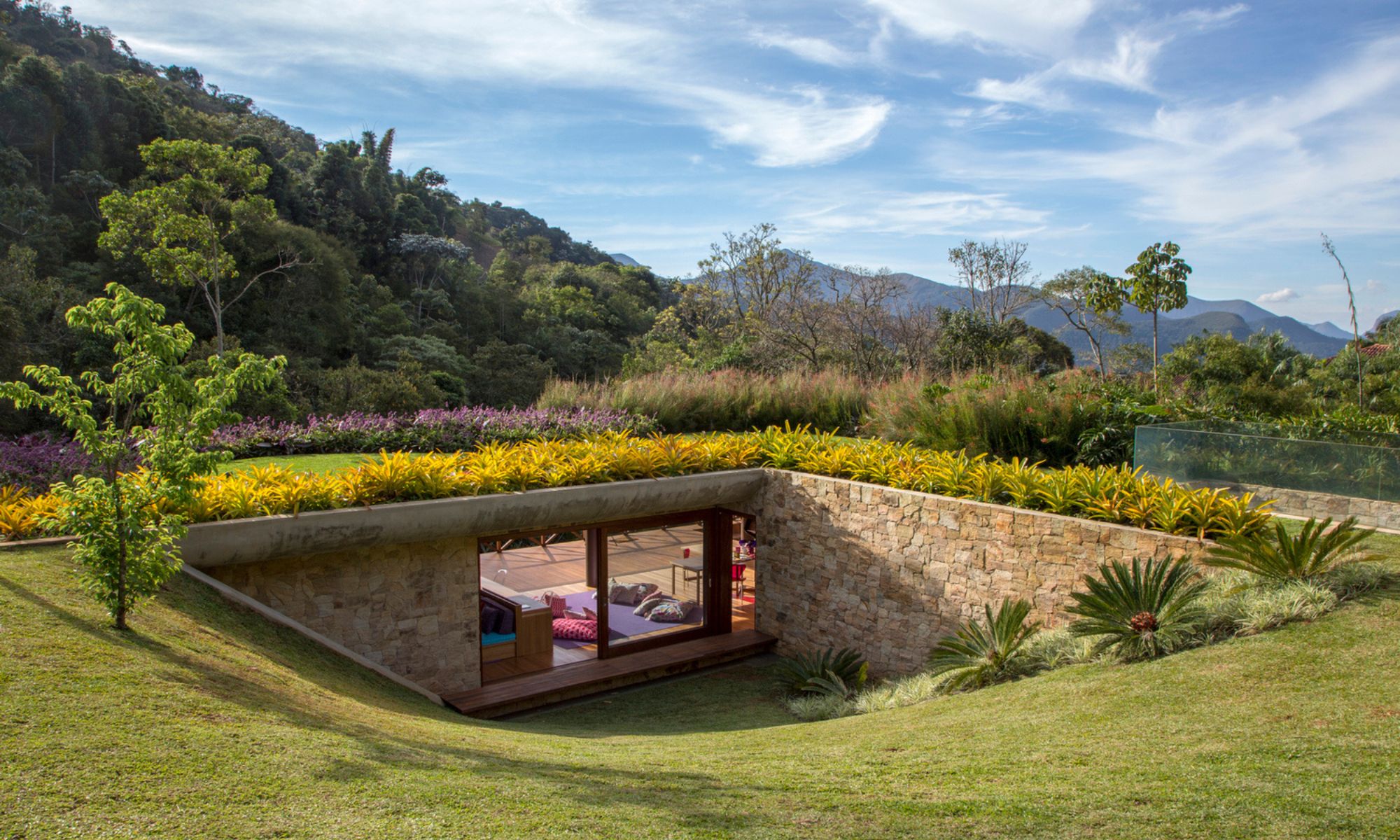Earth-Sheltered Homes
Safe, Durable and Well-Insulated
Published on July 6th, 2023

In 2023, a tornado with winds up to 275 km/h carved a swath of destruction through Carstairs, Alberta. Twelve homes were in its path: three were destroyed, four were left uninhabitable and the remaining five were damaged.
Tornadoes and storms are expected to become more common in Canada and occur in areas previously unaffected (Western University 2023). Understandably, these extreme weather events are generating new interest in earth-sheltered homes.
Are you imagining a hobbit house from Lord of the Rings, or the 1,500-year-old dwellings built into the cliffs at Mesa Verde in Colorado? Those are some of the most famous examples, but in fact, our ancestors have been building durable, well-insulated earth-sheltered homes for thousands of years.
Today, modern architects are creating strikingly beautiful, light-filled, warm, and tranquil homes nestled into the natural environment. Visit Pinterest to view many innovative examples.
Benefits
The U.S. Department of Energy notes that earth-sheltered homes cost less to insure than conventional wood-frame homes because they offer extra protection against high winds, hailstorms, tornadoes, and hurricanes (U.S. Department of Energy 2023). They are also less susceptible to the impact of extreme outdoor air temperatures reducing heating and cooling costs. This is because the temperature of the earth varies much less than air temperatures allowing the surrounding soil and rock to absorb extra heat from the house in hot weather while insulating it in the winter.
As well, these homes usually require less outdoor maintenance, blend harmoniously into the natural environment, and offer excellent soundproofing.
What is an earth-sheltered house?
Typically, a home is built into a slope (reducing the need for extensive excavation) with the front wall featuring floor to ceiling windows to maximize light. The roof may have skylights or light tunnels and it may be partially covered in vegetation. In other cases, the home is built with only one or two sides against a rock face or slope.
Ideal Building Site
Earth-sheltered homes are most efficient in climates that have significant temperature extremes and low humidity although the benefits of storm protection make it a good choice in other regions too.
Construction Materials
Concrete is the most popular choice of building material since it is will not decay in the soil, which is why it is used for traditional home foundations. Poured concrete is ideal, but a more affordable option would be masonry units (also called concrete blocks). Steel can used for beams, bar joists, columns, and concrete reinforcement, but must be protected from corrosion if exposed to the elements. Wood can be used on interior walls.
Challenges
Drainage is a key concern with this type of construction. Granular soils containing sand or gravel are best because they will bear the weight of construction materials while being very permeable, which allows precipitation to quickly drain away. Clay soils are a poor choice since they expand and contract and are not as permeable as granular soils.
The site must also be well above the level of the groundwater to avoid water pressure on the underground walls and floors.
Because earth-sheltered homes are built so solidly, they must have adequate air circulation to ensure a supply of fresh air while maintaining proper humidity. During the summer, moisture can condense on interior walls, so, in addition to good air circulation, it is important to find the right balance of insulation on the outside of the walls; you want to enjoy the benefits of natural earth cooling without cooling the home too much.
Changing Perceptions
Homes that are earth-sheltered on one or two sides (e.g., built into part of a hillside) can resemble a traditional home while providing cost-savings and wind protection. This is a good transition from our traditional, free-standing wood-frame homes.
Insurance is another compelling factor. Windswept coastlines and so-called tornado alleys are high-risk locations and eventually, insurers may not wish to take on the risk.
Rammed Earth
When a building site is not suitable for an earth-sheltered home, rammed earth construction can be a great alternative.
The walls are made using some of the local excavation material to create thick walls that can withstand high winds while providing excellent insulation. One of the most famous Canadian examples is Randy Bachman’s rammed earth home on Salt Spring Island.
Sources:
U.S. Department of Energy. Accessed June 2023. “Efficient Earth-Sheltered Homes.” https://www.energy.gov/energysaver/efficient-earth-sheltered-homes.
Western University. Accessed June 2023. “Northern Tornadoes Project.” https://www.uwo.ca/ntp/.
Powered by Froala Editor